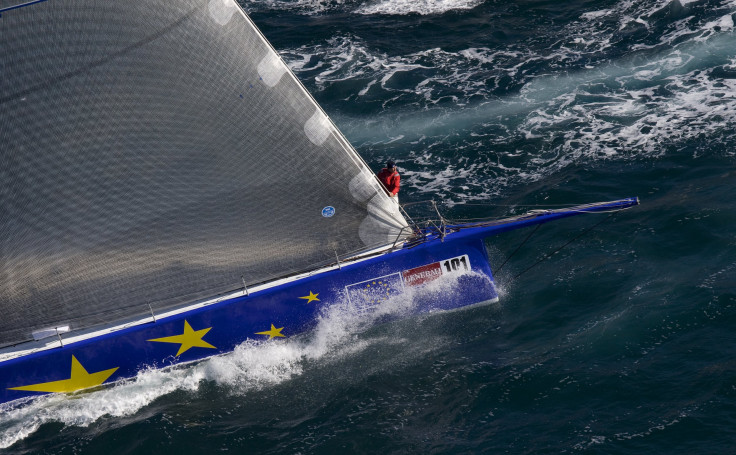Smoother Sailing With A Rough Surface? Ridged Hull Could ‘Reduce Drag’ And Save Energy On Ships

We think of smooth surfaces as being best for gliding through water with ease. Think swimmers’ smooth legs, or the sleek underbelly of a sailboat. But new research is supporting previous evidence that rough surfaces could actually prove better for speed.
Scientists in California who experimented with various hull designs landed on a surface covered with tiny ridges as being optimal for smooth maneuvering. They found that a rough surface reduced drag created by the friction of flowing water, even in choppy conditions. Their study, published in the journal Physics of Fluids, demonstrates that covering the underside of cargo and passenger vessels with a rough surface could even decrease a ship’s carbon footprint.
“A properly designed rough surface, contrary to our intuition, can reduce skin-friction drag,” John Kim, a professor in the mechanical and aerospace engineering department at the University of California, Los Angeles, said in a statement. “It could lead to significant energy savings and reduction of greenhouse gas emissions.”
Kim and his team researched not just rough surfaces, but also surfaces that are hard to wet, a property known as superhydrophobicity. This means the exterior is capable of trapping air bubbles, creating a tiny cushion of air around the hull of the vessel. The UCLA team’s design was successful because it kept these air bubbles trapped, rather than shedding them in turbulent waters. In nature, superhydrophobicity occurs in lotus plants, which wick away moisture from their leaves.
But the idea that a rough surface could make for smoother sailing isn’t as novel as it might sound. In 1987, during the America’s Cup yacht races in Australia, a representative of Stars and Stripes, a team from San Diego, admitted to using a “secret weapon” to win the 1987 America’s Cup. The team coated the hull of their ship in tiny grooves, called “riblets,” that were only visible up close.
''We had tested over 40 coatings, from gops to goops and paints, looking for finishes that were better than the state-of-the-art,'' John Marshall, the team's design coordinator, told The New York Times more than 25 years ago.
The coating was applied to the boat using 2- to 3-foot plastic panels etched with the fine grooves. The “drag reduction film,” as it was called, was as thin and clear as Scotch. The idea stemmed from initial works by NASA.
The same technology has also been tested by Boeing to reduce air turbulence around its jets.
© Copyright IBTimes 2025. All rights reserved.






















